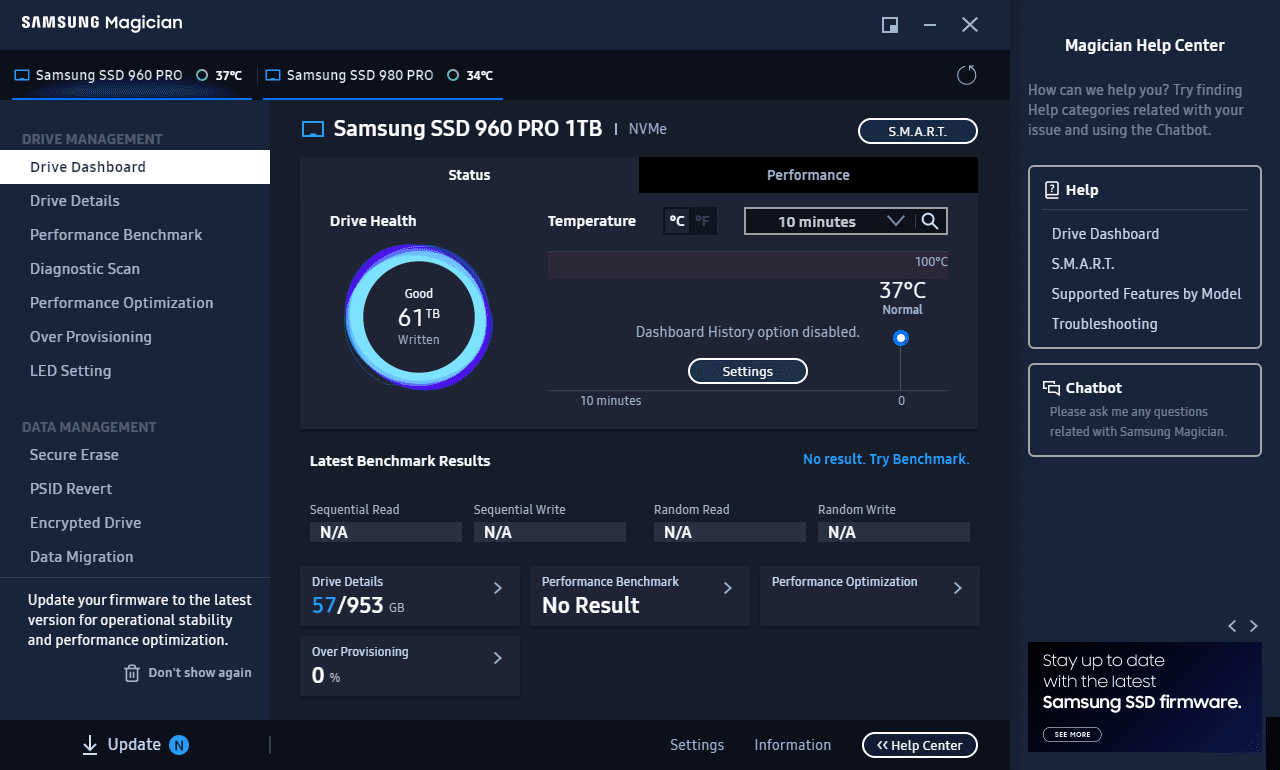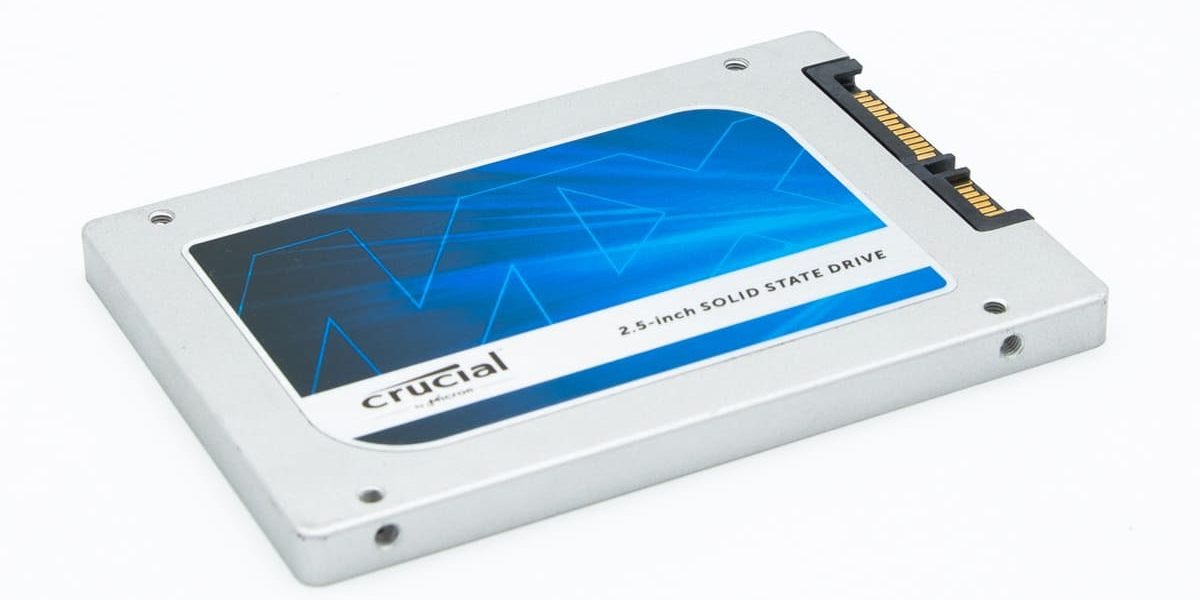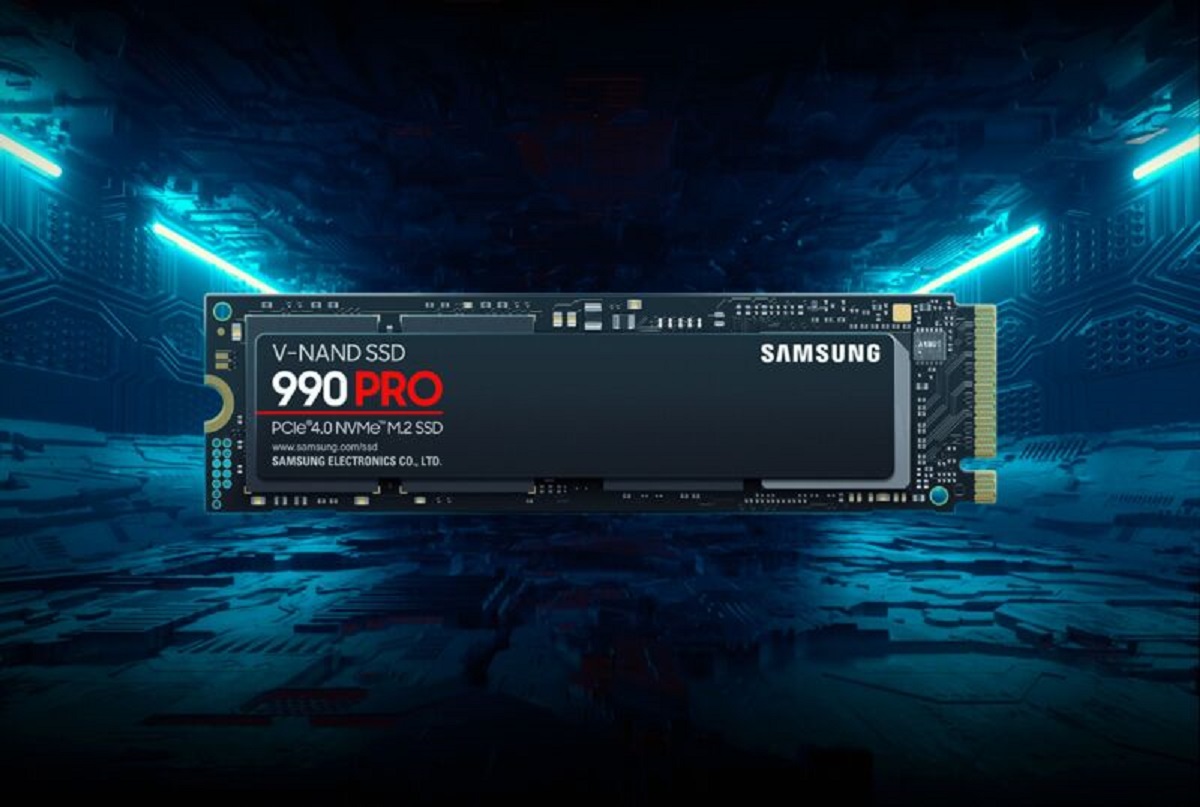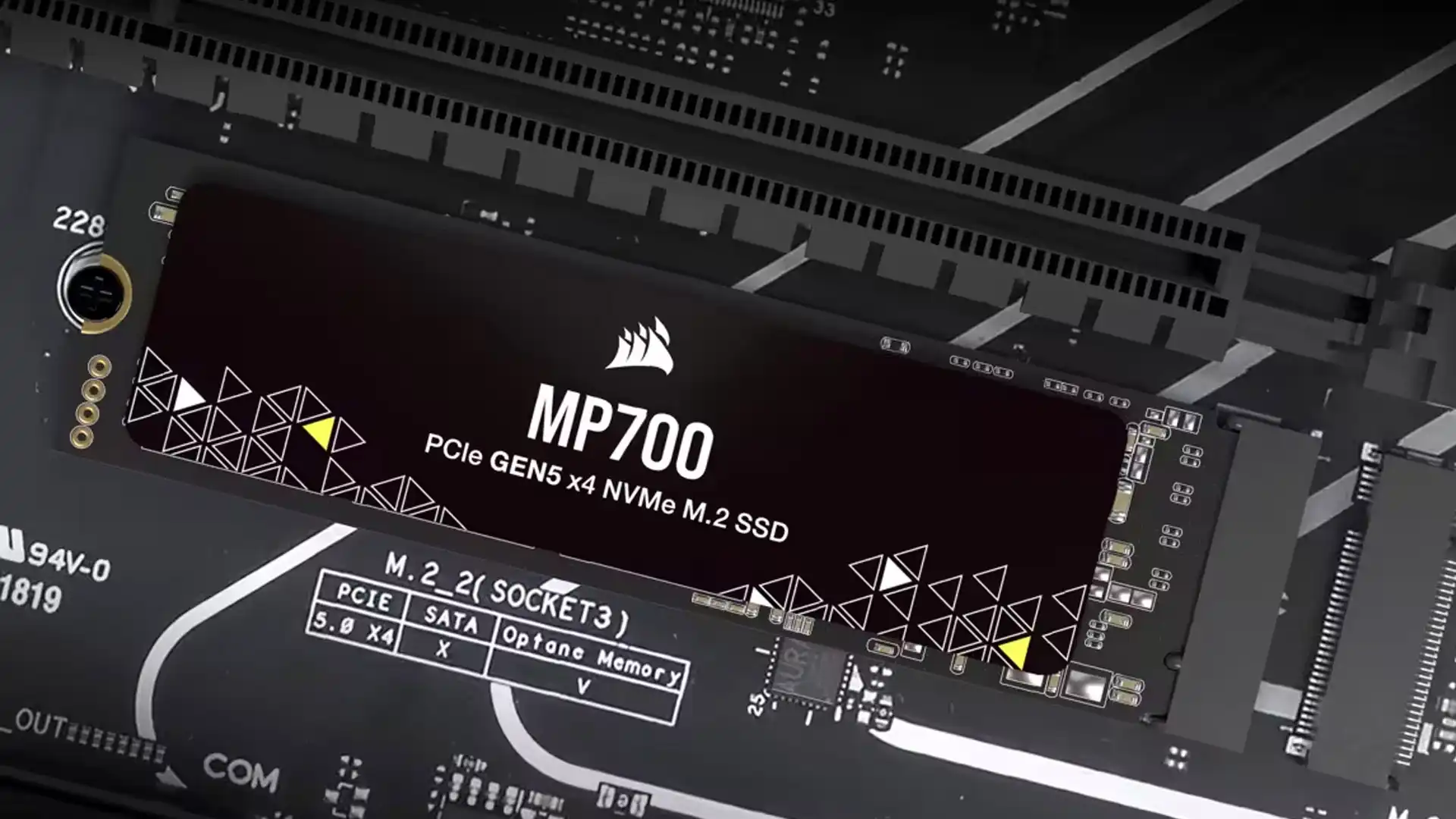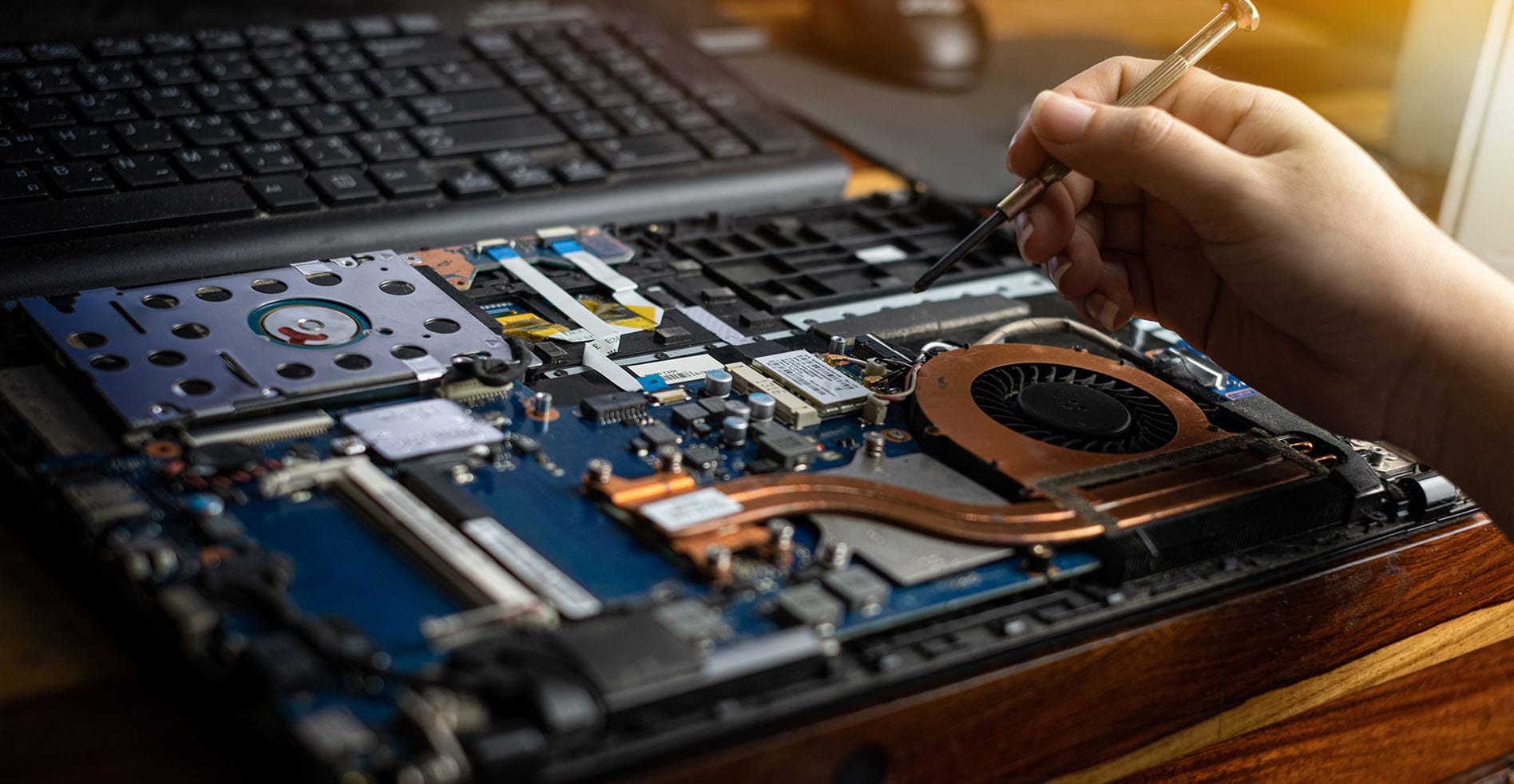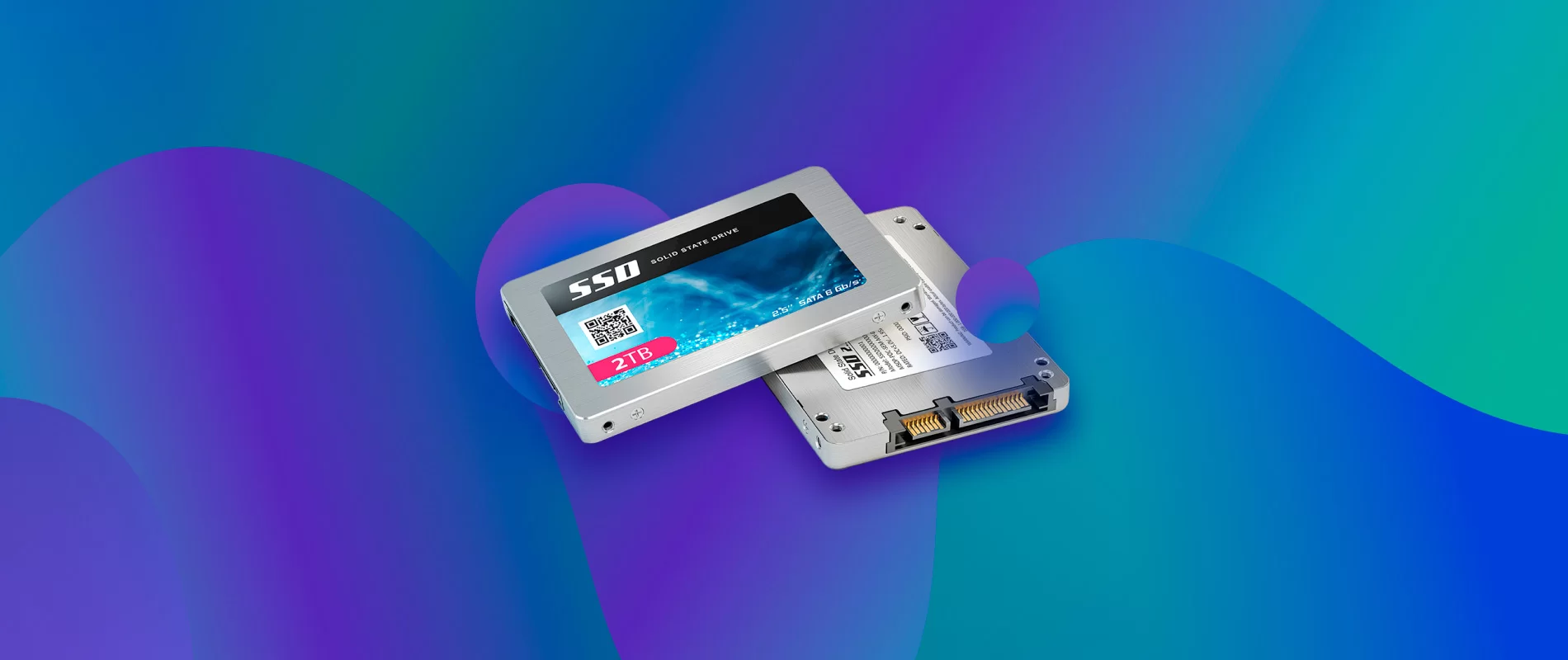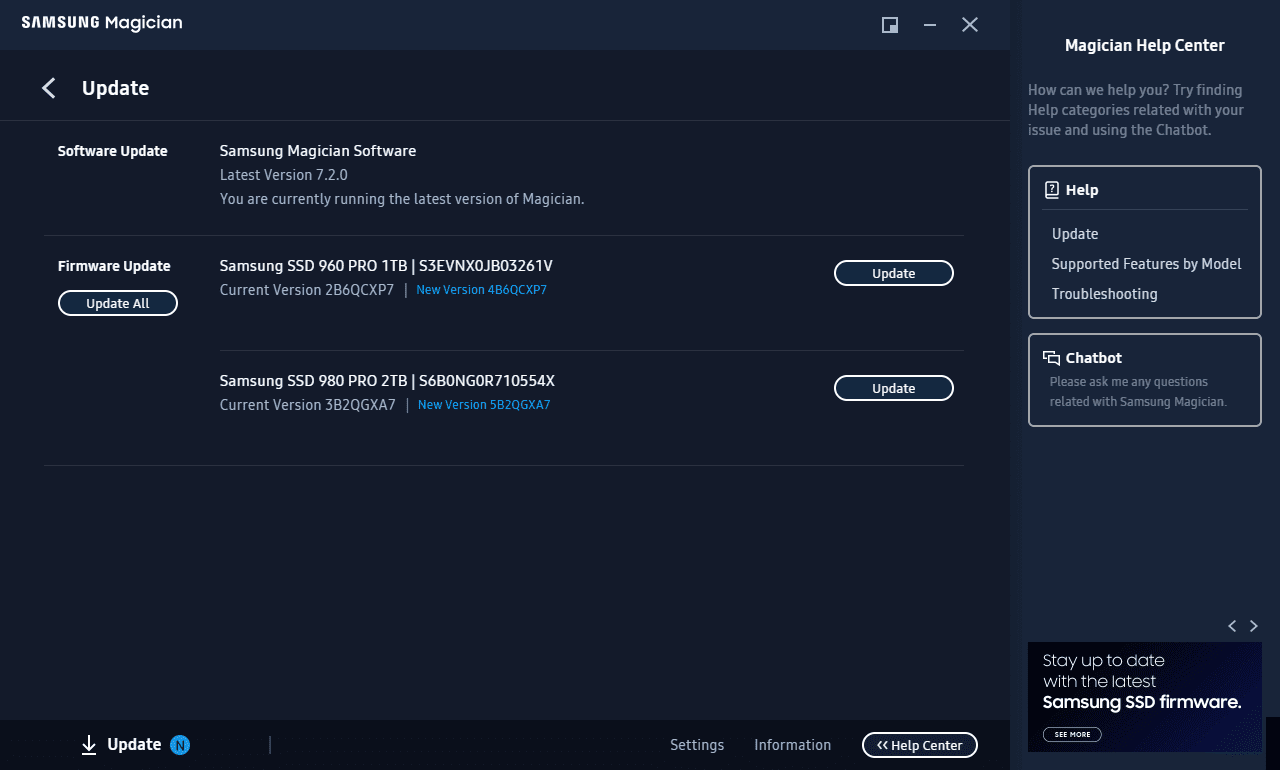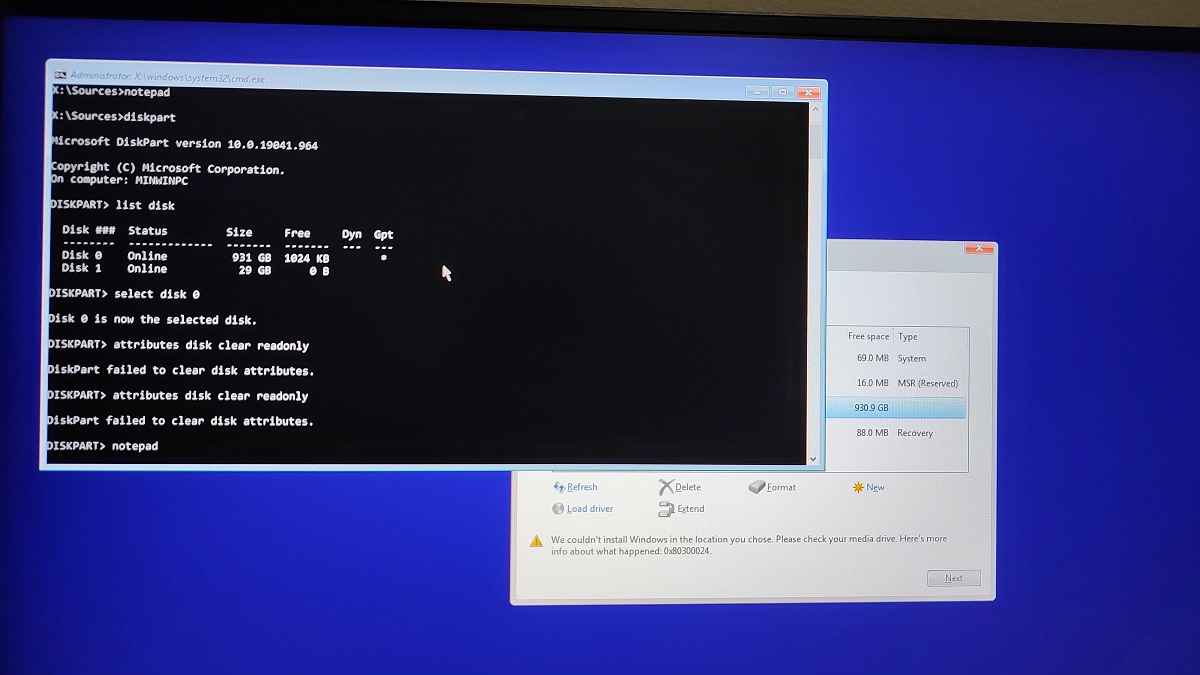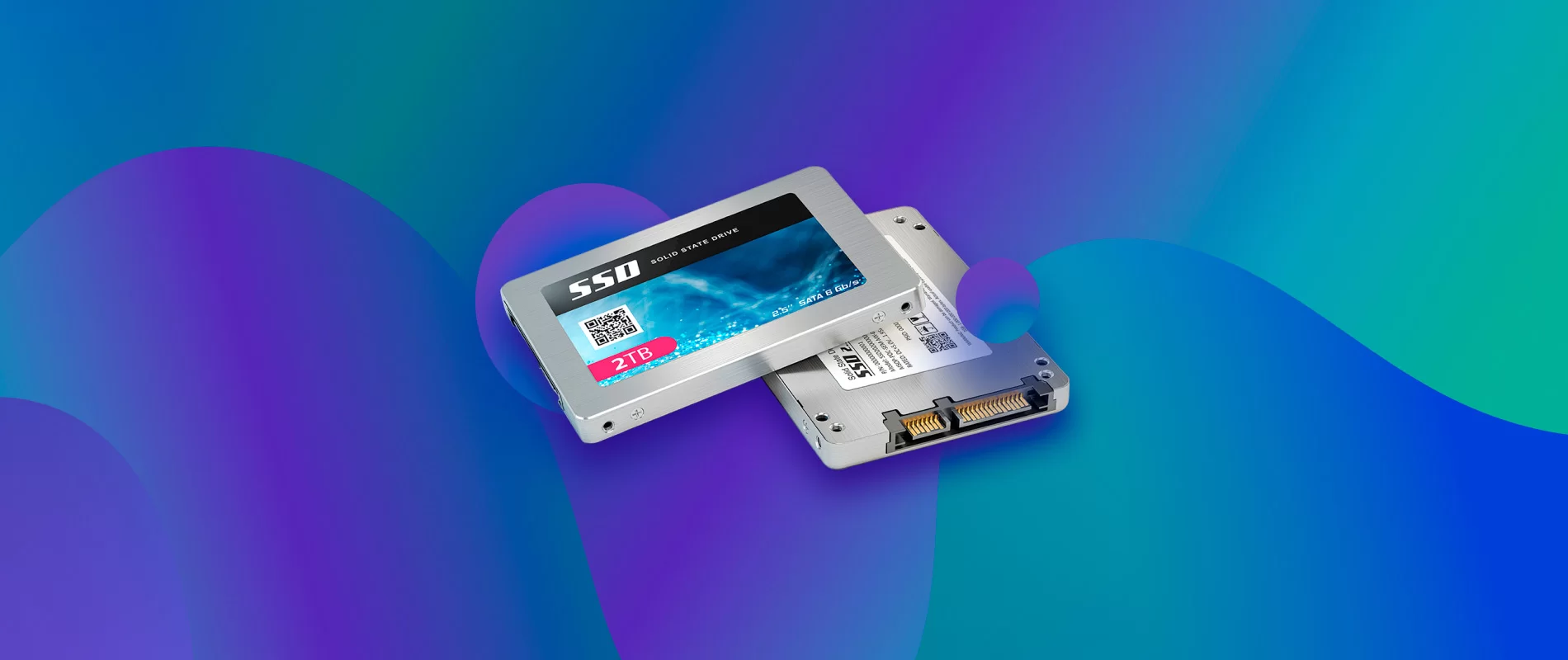Introduction
Firmware updates play a crucial role in ensuring the optimal performance and reliability of solid-state drives (SSDs). An SSD’s firmware is like its operating system, responsible for managing data, handling commands, and maintaining overall functionality. Just like any other software, SSD firmware needs to be updated periodically to address bugs, introduce new features, and improve compatibility with evolving technologies.
In this article, we will walk you through the process of updating the firmware on your SSD. We will explain why these updates are important, how to check for available firmware updates, and the steps to successfully perform the update. Additionally, we will discuss the significance of backing up your data before embarking on the firmware update, as well as provide troubleshooting tips for any potential issues that may arise during the process.
Updating the firmware on your SSD should not be overlooked. It can enhance your drive’s performance, resolve compatibility issues, and potentially extend its lifespan. By staying up-to-date with the latest firmware, you can ensure that your SSD is functioning optimally and taking advantage of new features and improvements that manufacturers introduce over time.
Before we dive into the specifics, it’s vital to note that firmware updates can vary depending on the manufacturer and the specific SSD model you own. Therefore, while the general process remains similar across different devices, it’s essential to consult your SSD’s manual or the manufacturer’s website for specific instructions pertaining to your SSD model.
So, let’s get started and learn how to update the firmware on your SSD to unlock its full potential and keep it running smoothly.
Understanding Firmware Updates for SSDs
Firmware updates are essential for SSDs as they address bugs, enhance performance, and introduce new features. SSD firmware is a specialized software embedded in the drive’s hardware that operates as the interface between the SSD and the operating system. It is responsible for managing data, handling commands, and controlling various functions of the drive.
SSD manufacturers regularly release firmware updates to address known issues, improve compatibility with new technologies and operating systems, and optimize performance and reliability. These updates often include bug fixes to resolve issues that may impact data integrity, stability, and speed. They may also introduce new features or settings to enhance the user experience or provide additional security measures.
Firmware updates can significantly improve SSD performance. They may include algorithms that optimize data placement, enhance error correction capabilities, or improve the drive’s wear-leveling algorithms to prolong its lifespan. By updating the firmware, you can ensure that your SSD is running efficiently and benefiting from the latest advancements in technology.
Understanding the firmware version currently installed on your SSD is crucial. You can check the installed firmware version through the SSD manufacturer’s software or by accessing the drive’s SMART (Self-Monitoring, Analysis, and Reporting Technology) data through operating system utilities. This information will help you determine if your SSD is running the latest firmware or if an update is available.
It’s worth noting that firmware updates should only be performed if there is a specific need or benefit. While updates generally improve performance and fix issues, there is a small possibility that a firmware update can introduce new problems or be incompatible with specific hardware configurations. Therefore, it is recommended to review the release notes associated with the firmware update and verify that it addresses issues relevant to your setup before proceeding with the update.
In the next section, we will explore the reasons why updating your SSD’s firmware is important and the benefits it can bring to your drive’s performance and overall reliability.
Reasons to Update Firmware
Updating the firmware on your SSD is crucial for several reasons. Let’s explore the main reasons why keeping your SSD’s firmware up to date is important.
1. Bug Fixes: Firmware updates often include bug fixes that address issues affecting the performance, stability, and security of your SSD. These bugs may impact data integrity, cause system crashes, or lead to compatibility problems with certain hardware or software configurations. By installing the latest firmware updates, you can ensure that these issues are resolved, providing a smoother and more reliable user experience.
2. Performance Enhancements: SSD manufacturers continuously work on improving the performance of their drives. Firmware updates may include optimizations for data transfer rates, read and write speeds, and overall responsiveness. These enhancements can result in faster boot times, improved application loading, and better multitasking capabilities.
3. Compatibility Updates: As technology evolves, new hardware components and software systems are introduced. Firmware updates address compatibility issues that may arise with these advancements, ensuring that your SSD can seamlessly integrate with the latest technologies and operating systems. By updating the firmware, you can avoid potential conflicts and ensure optimal performance with your current setup.
4. New Features and Functions: Firmware updates may introduce new features or settings that enhance the functionality and usability of your SSD. These features could include power management options, encryption capabilities, or improved error correction mechanisms. By updating the firmware, you can access these additional features and take full advantage of the capabilities of your SSD.
5. Security Patches: Firmware updates often include security patches that address vulnerabilities and protect your data from potential threats. These updates can patch security exploits or vulnerabilities that may be discovered after the initial release of the SSD. Keeping your firmware up to date is essential for maintaining the security and integrity of your data.
By updating the firmware on your SSD, you can ensure that your drive operates at its best performance, remains compatible with the latest technologies, and benefits from bug fixes and security patches. In the next section, we will discuss how to check for available firmware updates for your SSD.
Checking for Available Firmware Updates
Before updating the firmware on your SSD, it is essential to check if there are any available updates. Here are the steps to determine if a firmware update is available for your SSD:
1. Consult the Manufacturer’s Website: The first step is to visit the website of your SSD’s manufacturer. Most manufacturers offer dedicated support sections or product pages that provide firmware updates for their SSD models. Navigate to the support section and search for your specific SSD model to find the latest firmware release.
2. Check the SSD Manufacturer’s Software: Some SSD manufacturers provide software tools that allow users to check for firmware updates directly from their computers. These tools may also offer additional features, such as performance monitoring and drive health information. Download and install the manufacturer’s software, then use it to check for available firmware updates for your SSD.
3. Review Release Notes: Once you have found a firmware update, it is crucial to review the associated release notes. These notes provide information about the changes, improvements, and fixes included in the firmware update. Pay attention to any specific issues or benefits mentioned in the release notes that might be relevant to your setup.
4. Consider Compatibility: While checking for firmware updates, it is important to ensure compatibility with your SSD model and computer system. Some firmware updates may be specific to certain SSD models or require specific hardware or software configurations. Make sure to verify that the update is compatible with your SSD and computer before proceeding with the installation.
In addition to these steps, it is also a good idea to periodically check for firmware updates even if your SSD is functioning properly. Manufacturers may release updates that improve performance, compatibility, or security even if no specific issues are apparent. Keeping your SSD’s firmware up to date ensures that you are benefiting from the latest advancements and improvements.
In the next section, we will discuss the importance of backing up your important data before proceeding with a firmware update.
Backing Up Important Data
Before updating the firmware on your SSD, it is crucial to back up any important data stored on the drive. While firmware updates are generally safe, there is a small risk of data loss or corruption during the process. By backing up your data, you can ensure that it is protected and can be easily restored in case of any unforeseen issues. Here’s how you can back up your important data:
1. Identify Important Data: Take some time to identify the data that you consider important and want to back up. This can include documents, pictures, videos, and any other files that you cannot afford to lose.
2. Select a Backup Method: There are various methods to back up your data, including external hard drives, cloud storage services, or network-attached storage (NAS) devices. Choose a method that suits your needs and make sure you have enough storage space to accommodate your data.
3. Create a Backup Schedule: Depending on the frequency of data changes and importance, create a backup schedule. Regularly backing up your data, especially before any major changes or updates, provides an extra layer of protection.
4. Perform the Backup: Once you have chosen the backup method and schedule, proceed to back up your data. Follow the specific instructions provided by the chosen backup method, such as connecting the external hard drive or configuring the cloud storage service.
5. Verify the Backup: It is advisable to verify the integrity of your backup by attempting to restore a sample of the backed-up data. This ensures that the backup process was successful and that you can retrieve your data if needed.
Backing up your important data is a crucial step before updating the firmware on your SSD. It provides an added layer of protection and ensures that your valuable files are safe. In the next section, we will discuss the steps involved in downloading the latest firmware update for your SSD.
Downloading the Latest Firmware Update
Once you have performed a backup of your important data, the next step in updating the firmware on your SSD is to download the latest firmware update. Here’s how to proceed with downloading the firmware update:
1. Visit the Manufacturer’s Website: Start by visiting the website of your SSD’s manufacturer. Look for the support section or downloads page, where you can find the available firmware updates for your specific SSD model.
2. Select the Correct Firmware Update: Locate the firmware update that corresponds to your SSD model. Ensure that you are downloading the correct update to avoid compatibility issues and potential damage to your drive.
3. Read the Instructions: Before proceeding with the download, take the time to carefully read any instructions or release notes provided by the manufacturer. These documents often include important information and precautions to ensure a successful firmware update.
4. Download the Firmware Update: Click on the download link or button to start downloading the firmware update file. The file may be provided in a compressed format, such as a ZIP file, so make sure to extract it to a convenient location on your computer.
5. Verify the Authenticity of the Firmware: It is important to ensure that you are downloading the firmware update from an official and trusted source. Stick to the manufacturer’s website or official channels to avoid any potential security risks or compatibility issues.
6. Keep the Firmware Update File Handy: Once the firmware update file is downloaded, make sure to keep it in a safe and easily accessible location. You will need this file for the next steps in the firmware update process.
Downloading the latest firmware update for your SSD is an important step towards improving its performance and resolving any existing issues. In the next section, we will guide you through the process of preparing your SSD for the firmware update.
Preparing the SSD for Firmware Update
Before proceeding with the firmware update on your SSD, it is crucial to properly prepare the drive to ensure a smooth and successful update process. Here are the steps to prepare your SSD for the firmware update:
1. Close All Applications: Before starting the firmware update process, close all running applications and make sure there are no ongoing processes or tasks accessing the SSD. This helps minimize the chances of interference or data corruption during the update.
2. Disable Disk Encryption or Secure Boot: If your SSD is encrypted or your computer is using Secure Boot, it is important to temporarily disable these features before updating the firmware. This ensures that the firmware update process can access and modify the SSD as required.
3. Disconnect External Storage Devices: To prevent any potential conflicts or issues, disconnect any external storage devices, such as USB drives or external hard drives, from your computer. This reduces the chances of accidentally selecting the wrong disk during the firmware update process.
4. Check Available Power: Ensure that your computer is connected to a reliable power source or that the laptop battery is adequately charged. Losing power during the firmware update process can have severe consequences, including data loss or drive corruption.
5. Reusable Backup: Double-check that you have a working backup of your important data from the SSD. This serves as an extra precautionary measure in case anything goes wrong during the firmware update, protecting your valuable files from potential loss.
6. Read the Firmware Update Instructions: Carefully read the instructions provided by the SSD manufacturer for updating the firmware. These instructions may include specific requirements or recommendations to follow before proceeding with the update. Make sure you understand and comply with any provided guidelines.
By properly preparing your SSD for the firmware update, you minimize the risk of encountering any issues and increase the chances of a successful update. In the next section, we will guide you through the process of updating the firmware on your SSD.
Updating the Firmware on SSD
Once you have prepared your SSD for the firmware update, you are ready to proceed with the actual update process. Follow these steps to update the firmware on your SSD:
1. Locate the Firmware Update Utility: Some SSD manufacturers provide a dedicated firmware update utility that simplifies the update process. Visit the manufacturer’s website and locate the appropriate utility for your SSD model. Download and install the utility if necessary.
2. Launch the Firmware Update Utility: Open the firmware update utility on your computer, following any instructions provided by the manufacturer. Connect your SSD to the computer if it is not already connected.
3. Backup Power Source: If you are updating the firmware on a laptop, make sure it is connected to a power source to prevent power loss during the update process. Interruptions in power can result in irreversible damage to the SSD.
4. Select the SSD: Within the firmware update utility, select the SSD that you want to update. Make sure you choose the correct drive, as selecting the wrong drive can lead to data loss or damage. Double-check the SSD’s model number to ensure accuracy.
5. Start the Firmware Update: Initiate the firmware update process by following the prompts provided by the firmware update utility. This may involve agreeing to terms and conditions, clicking on “Update” or a similar button, or following on-screen instructions.
6. Wait for the Update to Complete: Once the firmware update process begins, allow it to complete without interruption. On-screen progress indicators or messages will notify you of the update’s progress. Avoid performing any other operations on the computer or removing the SSD during this time.
7. Restart the Computer: After the firmware update is complete, the utility may prompt you to restart your computer. Follow the instructions given and allow the computer to restart to finalize the firmware update process.
8. Verify the Firmware Version: After the computer has restarted, you can verify that the firmware update was successful by checking the firmware version in the SSD manufacturer’s software or through the operating system. The updated firmware version should match the one provided in the firmware update release notes.
By following these steps, you can successfully update the firmware on your SSD, ensuring improved performance, compatibility, and reliability. In the next section, we will discuss the importance of verifying the firmware update and provide troubleshooting tips for any issues that may occur during the process.
Verifying the Firmware Update
Once you have completed the firmware update on your SSD, it is crucial to verify that the update was successful. This verification process helps ensure that the firmware has been properly installed and your SSD is functioning as expected. Here are the steps to verify the firmware update:
1. Check Firmware Version: Open the SSD manufacturer’s software or use the operating system’s utilities to verify the firmware version. Compare it with the version mentioned in the firmware update release notes. If they match, it indicates a successful update.
2. Monitor Drive Performance: After the firmware update, monitor your SSD’s performance for any noticeable improvements or changes. Check for any unexpected behavior or issues that were present before the firmware update. The improved performance and stability should reflect the benefits mentioned in the firmware release notes.
3. Run Performance Tests: You can also run benchmarking or performance testing software to measure the SSD’s read and write speeds, random access times, and overall performance. Compare the results with previous benchmark scores or industry standards to ensure that the firmware update has positively impacted the drive’s performance.
4. Validate Feature Updates: If the firmware update introduced new features or settings, verify that these features are available and functioning properly. For example, if power management options were added, ensure that you can access and utilize these settings.
5. Give it Time: In some cases, the full benefits of a firmware update may not be immediately apparent. Allow some time for your SSD to adapt and optimize its performance based on the updated firmware. Some improvements, such as wear-leveling algorithms or error correction mechanisms, may take a little time to fully optimize.
If you encounter any issues or notice unexpected behavior after the firmware update, refer to the troubleshooting steps provided by the SSD manufacturer. These steps can help identify and resolve any issues that may have arisen during the update process.
Verifying the firmware update is necessary to ensure that your SSD is running the latest firmware version and benefiting from the improvements and enhancements introduced by the update. In the next section, we will discuss troubleshooting tips for any firmware update issues that you may encounter.
Troubleshooting Firmware Update Issues
While updating the firmware on your SSD is usually a straightforward process, there can be instances where issues arise. If you encounter any problems during the firmware update, here are some troubleshooting tips to help you resolve them:
1. Restart the Update Process: If the firmware update encounters an error or fails to complete, try restarting the update process. Close the firmware update utility, disconnect and reconnect the SSD, and relaunch the utility to initiate the update again.
2. Update in Safe Mode: If you are experiencing issues during the firmware update, try performing the update in Safe Mode. Safe Mode limits the number of running processes and can help mitigate any conflicts or interference that may be causing the problem.
3. Disable Antivirus or Security Software: Antivirus or security software can sometimes interfere with the firmware update process. Temporarily disable any third-party antivirus or security software before attempting the firmware update to rule out any compatibility issues.
4. Use a Different Computer or USB Port: If you are encountering persistent issues on a specific computer, try using a different computer or USB port. This can help determine if the issue is specific to the computer or USB port being used.
5. Check Firmware Compatibility: Verify that the firmware update is compatible with your specific SSD model. Using an incorrect or incompatible firmware update can cause issues and potentially damage your SSD.
6. Contact SSD Manufacturer Support: If you have tried the above steps and are still experiencing problems, reach out to the support team of your SSD manufacturer. They can provide further guidance and assistance in resolving the firmware update issues.
It is important to approach firmware update troubleshooting with caution. Make sure to follow the SSD manufacturer’s instructions and consult their support resources. If you are unsure or uncomfortable with troubleshooting the issue yourself, it may be best to seek professional assistance or guidance.
By employing these troubleshooting tips, you can overcome firmware update issues and ensure that your SSD is running the latest firmware version for optimal performance and reliability. In the next section, we will briefly summarize the key points discussed throughout this article.
Conclusion
Updating the firmware on your SSD is a critical maintenance task that ensures your drive’s optimal performance, compatibility, and reliability. In this article, we covered the importance of firmware updates for SSDs and the reasons why you should keep your firmware up to date.
We discussed the steps involved in checking for available firmware updates, backing up important data before the update, downloading the latest firmware update from the manufacturer’s website, preparing the SSD for the update, and actually updating the firmware on the SSD. We then emphasized the significance of verifying the firmware update to ensure its success.
In addition, we provided troubleshooting tips for potential firmware update issues and stressed the importance of following the manufacturer’s instructions and seeking support when needed.
By staying up to date with firmware updates, you can experience improved performance, enhanced compatibility with new technologies, and bug fixes that address potential issues. Regularly checking for firmware updates and following the recommended procedures can help you keep your SSD operating at its best.
Remember, each SSD manufacturer may have their own specific firmware update process, so it is essential to consult their documentation and resources for your particular SSD model. Keeping your firmware up to date ensures that your SSD continues to deliver the best performance and reliability possible, ultimately enhancing your overall computing experience.
We hope this article has provided you with the knowledge and guidance to confidently update the firmware on your SSD. By staying informed and proactive, you can make the most out of your SSD’s capabilities and enjoy a smoother, more efficient computing experience.







